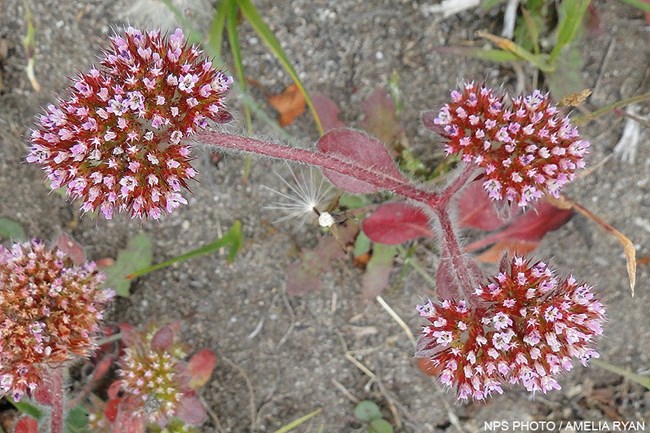
Point Reyes National Seashore has a variety of habitat types, from coastal dunes, to dense forests. The broad range of habitat types supports over 900 species of vascular plants, three of which are endemic, i.e., found nowhere else on Earth. Of these plants, over 50 are currently listed by the Federal government, State government, or the California Native Plant Society as being rare, threatened, or endangered. For a species to be listed as endangered, it has to be in danger of extinction throughout all or a significant portion of its range. Threatened means a species is likely to become endangered within the foreseeable future throughout all or a significant portion of its range. The Sixth Mass ExtinctionIn 1995, the National Academy of Sciences reported that: In recent years, it has become apparent that human activities are causing the loss of biological diversity at an increasing rate: the current rate of extinctions appears to be among the highest in the fossil record. Although non-human organisms can cause extinctions of other species to a small degree, no other organisms produce such large effects over such wide areas as humans do and have done—at least locally—for thousands of years. Habitat alteration and degradation are probably the most severe effects humans have on other species today. In 2019, the Intergovernmental Science-Policy Platform on Biodiversity and Ecosystem Services (IPBES) reported that: Nature is declining globally at rates unprecedented in human history — and the rate of species extinctions is accelerating, with grave impacts on people around the world now likely… Why Are Threatened, Rare, and Endangered Plants Important?We as humans are intricately connected to all species around us. By saving something as seemingly insignificant as a rare plant, you also save other organisms that depend upon those plants. These may be insects or herbivorous animals such as rabbits, deer, or even mice that need the seeds of the flower of a particular species to live. Did you know that a tiny plant could save your life? Plants are important sources of medicine and are potential ingredients to remedies for ailments humans may not yet have experienced. Drawing from the soil and a lush matrix of interdependence between organisms, the plant itself may someday hold the key to curing and treating future illness and disease. Why Do We Need to Save Them?At the cellular level, organisms need healthy "genetic stock" or diversity in genetic make-up to withstand environmental or catastrophic conditions. In other words, an organism that has many different genes as opposed to similar genes is more likely to withstand blight or a storm, disease or a drought. Having diverse genes acts as insurance against extinction and adds to an organism's resiliency. We need healthy populations, or as scientists say "viable populations", of organisms to continue to have a healthy gene pool. When populations become small, all offspring turn out to have the same genetic makeup. This makes that particular species more prone to being wiped out by factors such as blight or environmental events such as hurricanes and floods. Larger populations are healthier because of the reservoir of genes to produce healthier more resilient offspring. What is the Park Doing to Protect Threatened, Rare, and Endangered Plants?While we humans have the ability to dramatically impact and even wipe out other species and their habitat, we also have the ability to preserve and protect these same species and their habitat. As habitat is lost to human development, protected areas like Point Reyes National Seashore are increasingly important to the protection and recovery of species that are on the verge of disappearing from our world. Rare plant populations and their protection depend on us as conservationists and land stewards to take action. Their survival becomes entrusted to our care as land use values shift and these populations suffer from grazing pressure and the competition of non-native plant species. The fragile nature and fate of these organisms rests within our willingness and capacity to locate, map, monitor and protect these plants. If you would like to help the park protect threatened, rare, and endangered plants, visit the Habitat Restoration Volunteer Program page. How You Can HelpWhat should you do when you see an at-risk species in parks? What can you do when you go home to help at-risk species? Where do you start? Little actions can have big impacts when undertaken by many people. Visit the National Park Service's At-Risk Species: What You Can Do page to learn more. Invasive and non-native species are a significant threat to at-risk species. The best way to fight the spread of invasive species is to prevent them from occuring in the first place. There are a variety of ways you can help do this, whether you are at home or in a national park. Visit the National Park Service's Invasive & Non-Native Species: What You Can Do page to learn more. Species ListDownload the Species List: Threatened, Rare, and Endangered Plants of Point Reyes National Seashore (18 KB PDF) Threatened, Rare, & Endangered AnimalsVisit our Threatened, Rare, & Endangered Animals page to learn more some of the fauna protected at Point Reyes National Seashore.
Science & Research Project SummariesFrom 2006 to 2018, Point Reyes National Seashore and Pacific Coast Science and Learning Center (PCSLC) staff and communication interns assisted scientists conducting research through the PCSLC and the San Francisco Bay Area Inventory & Monitoring Network to produce a series of Resource Project Summaries, one of which was about Sonoma alopecurus, an endangered freshwater wetland grass found at Point Reyes and almost nowhere else. These one- to eight-page summaries provide information about the questions that the researchers hoped to answer, details about the project and methods, and the results of the research projects in a way that is easy to understand.
|
Last updated: March 30, 2025
